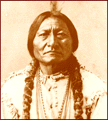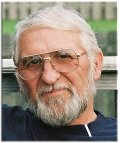

 |
 |
Two weeks ago, I toured the Little BigHorn Battlefield site in Montana. As a Native American, I approached that visit with some trepidation, knowing full well the history of the place. I first toured the museum, seeing artifacts and memorabilia from an era of the past. Weapons and bits of weapons, uniforms, pictures, a saddle, bridle - an interesting look into the life of a cavalryman on the American frontier of the late 1800s. Not much there about the Indian, which is not surprising since the Sioux, the Cheyenne and the Arapaho removed their dead and the accoutrements of war from the battlefield.
On the far wall of the museum is a hugh oil painting depicting what the battlefield may have looked like after the last cavalryman lay dead - a scene of plains Indians enjoying the spoils of war. Not necessarily a pretty site, but perhaps a factual representation.
From the musuem, I walked through the rolling hills of the actual battle ground. In every direction, there were solitary white grave markers - most of them stating only "A US Cavalryman died here on June 25, 1876." I was surprised at the number of civilians among the dead.
There were no grave markers for the Indians who died here, which is understandable since the Indians removed their dead.
There is a monument on top of what is called "Last Stand Hill." The enlisted soldiers who died at the Little BigHorn are buried in a mass grave under this large granite reminder. The officers are buried in various cemeteries nationwide. George Armstrong Custer is buried at West Point.
Just down the hill from this monument is another reminder, this one to the Native Americans who died at the battle on the Greasy Grass River. This monument, only dedicated last week on the anniversary of the battle, gives tribute to some 100 Indians who fought and died that day. Sioux, Cheyenne, Arapaho, Arikara, even the Crow who were scouts for the army are listed. This monument looks upward toward the other monument, a silent tribute from one fallen warrior to another.
As I walked these hills, I could close my eyes and hear the sound of gunfire, hear the cries of the dead and dying, smell gunpowder, smell the sweat and fear of the participants. Brave men died here, over 200 members of the US Cavalry and about 100 Plains Indians. Both soldiers and Indians died for a cause they believed in. As the last sounds of battle ended, the blood of red man and white man intermingled and soaked into the thirsty ground. No one could tell which was red man's blood and which was white man's blood.
I came away with a sense of awe and humility. As I left, I rendered a silent salute to all who died this day one hundred and twenty seven years ago.
On this Fourth of July, I will render another salute - a salute to warriors everywhere who had a part in making this nation what it is today.